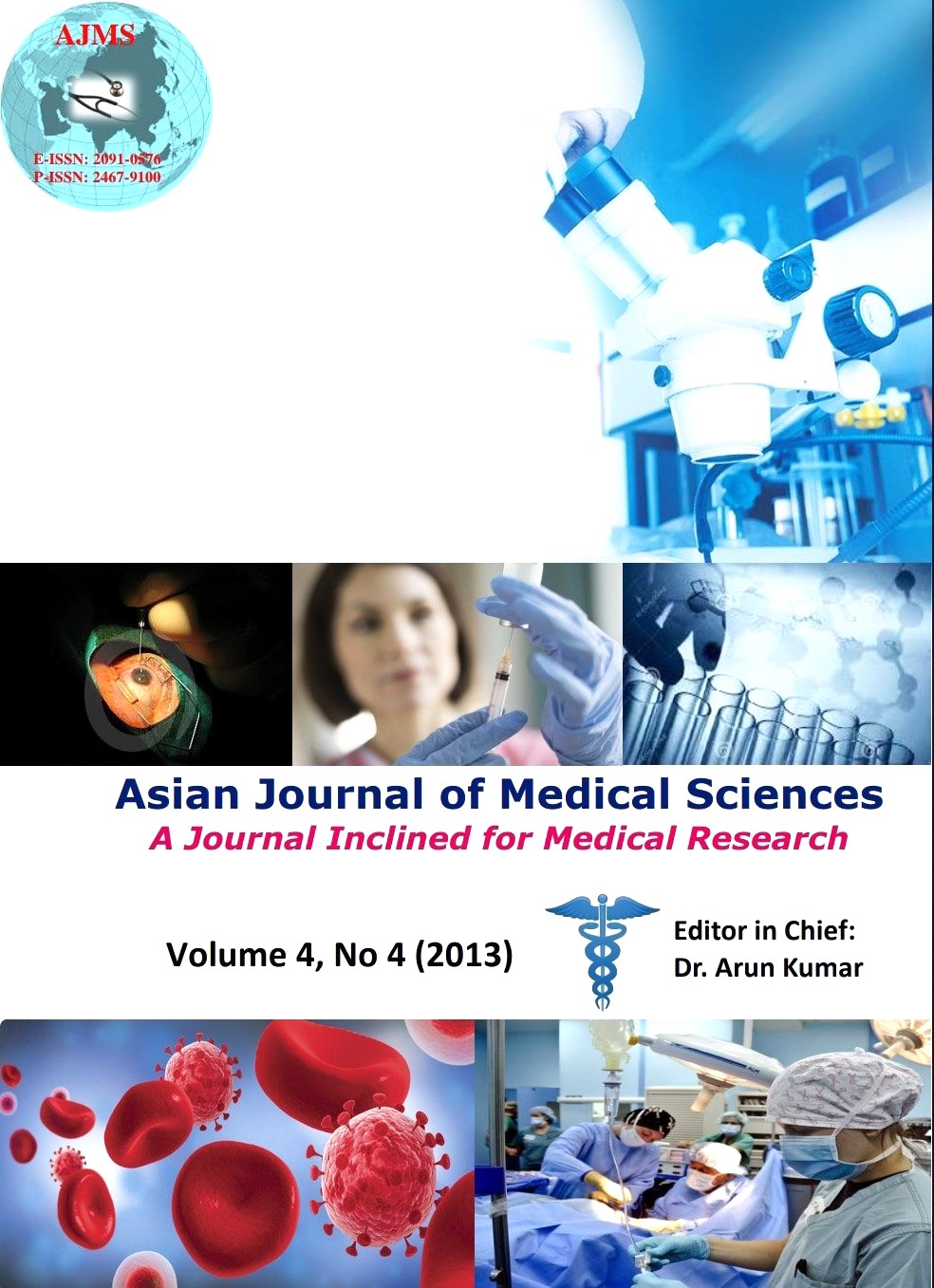Therapeutic Practice Preference in Dentistry: Antibiotics, Analgesics and Antiseptics
Keywords:
Analgesic, Antibiotic, Antiseptic, Dentistry, NepalAbstract
Objective: Present study was aimed to find out the commonest medicines used in dentistry as preferred by dental practitioners in Nepal.
Materials and Methods: Seventy pre-structured questionnaires were distributed to the dental practitioners. Questionnaire was designed to evaluate the use of the antimicrobial, analgesic and antiseptic agents. A total of three open ended questions were included in each questionnaire to know the preference of dental practitioners for different medicines used in dentistry. Yates corrected Chi square test was used wherever applicable and level of significance was set at 5%.
Results: Amoxicillin (89.4%, P<0.05), metronidazole (57.8%), amoxicillin with clavulanic acid (21%) and doxycycline (26.2%) were the most frequently preferred antibiotics of first, second, third and fourth choice respectively. Similarly, among analgesics, ibuprofen (52.6%), diclofenac (31.5%), paracetamol (47.3%) and nimesulide (24.5%) had the highest predilection for first, second, third and fourth choice respectively among the dental practitioners. Chlorhexidine (77.2%, P<0.05)) was the most selected antiseptic for the first choice followed by listerine for the second (31.5%) and third (43.8%) choice.
Conclusion: First choice antibiotic, analgesic and antiseptic are amoxicillin, ibuprofen and chlorhexidine respectively among the majority of dental practitioners.
Asian Journal of Medical Science, Volume-4 (2013), Pages 17-23
DOI: http://dx.doi.org/10.3126/ajms.v4i4.8062
Downloads
Downloads
Additional Files
Published
How to Cite
Issue
Section
License
Authors who publish with this journal agree to the following terms:
- The journal holds copyright and publishes the work under a Creative Commons CC-BY-NC license that permits use, distribution and reprduction in any medium, provided the original work is properly cited and is not used for commercial purposes. The journal should be recognised as the original publisher of this work.
- Authors are able to enter into separate, additional contractual arrangements for the non-exclusive distribution of the journal's published version of the work (e.g., post it to an institutional repository or publish it in a book), with an acknowledgement of its initial publication in this journal.
- Authors are permitted and encouraged to post their work online (e.g., in institutional repositories or on their website) prior to and during the submission process, as it can lead to productive exchanges, as well as earlier and greater citation of published work (See The Effect of Open Access).




